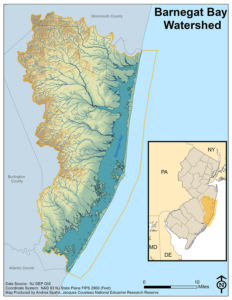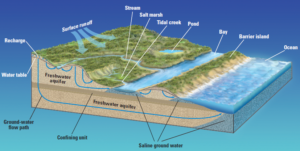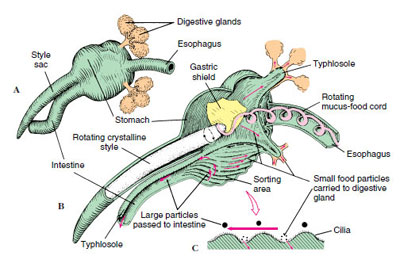
Barnegat Bay Environment
The Watershead
Barnegat Bay Watershed
 Barnegat Bay receives replenishment water from a number of sources:
Barnegat Bay receives replenishment water from a number of sources:
The ocean
Salt water enters through the three inlets.
Storm surges can bring in salt water by overflowing the barrier islands.
Rivers and streams
Much of the runoff from watershed land goes into small streams, then larger streams/rivers then into the bay .
Rain
A small percentage of fresh water is received directly from rain.
Rain falling on impervious surface (streets, sidewalks, parking lots, etc.) runoff goes into a sewer system or storm drain or through the watershed.
Ground water – water on non-impervious surfaces eventually flows into Barnegat Bay.
Subwatersheds
 Subwatersheads
Subwatersheads
Metedeconk River
Kettle Creek
Silver Bay
Toms River
Potter Creek
Cedar Creek
Forked River
Stouts creek
Oyster Creek
Mill Creek/Westecunk Creek
Tuckerton Creek
For more information see: <subwatersheds>
The Difference Between Detention and Retention Ponds
The main difference between a detention basin or retention basin, is the presence or absence of a permanent pool of water, or pond.
The water level is controlled by a low flow orifice.
In most cases, the orifice is part of a metal or concrete structure called a riser.
A detention, or dry pond has an orifice level at the bottom of the basin and does not have a permanent pool of water. All the water runs out between storms and it usually remains dry.
A retention basin or pond has a riser and orifice at a higher point and therefore retains a permanent pool of water.
A retention pond looks like a regular pond, but plays an important role in controlling stormwater runoff.
 The basins are important for storing and slowing stormwater runoff from nearby areas, especially areas with asphalt or concrete development.
The basins are important for storing and slowing stormwater runoff from nearby areas, especially areas with asphalt or concrete development.
Stormwater runoff flows much faster from these surfaces than naturally occurring areas and needs to be diverted to ensure the runoff occurs at the desired rate.
The amount of cleaning and treatment of the water is limited.
Dry basins, or detention basins, only control flood flows.
A retention pond can also provide some water quality benefits by reducing pollutants and sediments.
